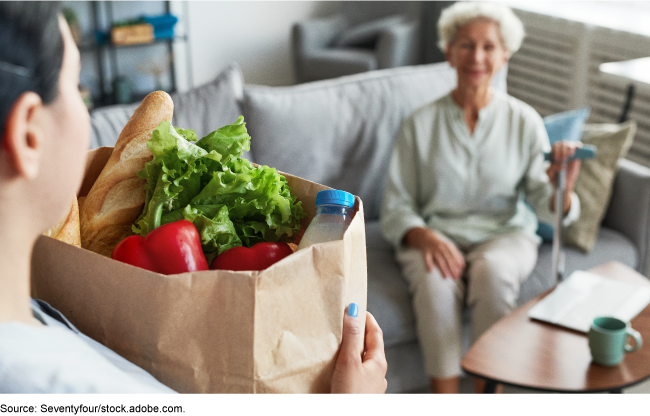Older Americans Act: Updated Information on Unmet Need for Services
Fast Facts
This report provides our most current data on the unmet need for meal services and home-based care services for older individuals—updating what we previously provided in 2015.
We estimated that:
Food insecurity among older Americans in 2021 was 18%
The percentage of those receiving home-delivered meals increased slightly during this period
The percentage of individuals who have trouble with one or two activities of daily living and who reported receiving no home-based care rose from 47% to 60% between 2012 and 2020
This page has been updated to correct the number of activities of daily living, and the percentage of individuals who have trouble with them and reported receiving no home-based care.

Highlights
What GAO Found
Food insecurity among older Americans was an estimated 18.1 percent in 2021, based on GAO’s analysis of the Current Population Survey (CPS). The same year an estimated 9 percent of low-income older adults received either home-delivered or congregate meals (meals served in group settings such as senior centers), while an estimated 22.7 percent received Supplemental Nutrition Assistance Program benefits. The data indicate that the percentage of those receiving home-delivered meals increased slightly relative to 2013. This pattern could suggest a shift toward home-delivered meals amid social distancing efforts during the COVID-19 pandemic.
The estimated percentage of older individuals reporting difficulties with daily activities decreased in the 2020 Health and Retirement Study (HRS) data relative to 2012 HRS estimates. The 2020 HRS also shows that the percentage of individuals who have trouble with at least one activity of daily living who also reported receiving home-based care decreased. This trend might be attributed to social distancing efforts during the COVID-19 pandemic, which may have reduced the provision of home-based services.
Why GAO Did This Study
GAO was asked to provide the most current data related to the Older Americans Act of 1965, as amended (Older Americans Act), and unmet need, updating what GAO provided in a 2015 correspondence.
This report includes quantitative analysis of (1) need for and receipt of meal services among older individuals, and (2) potential need for home-based care services among older individuals. To estimate the unmet need for meal services, such as those funded by Title III of the Older Americans Act (Title III programs), GAO used the U.S. Census Bureau’s 2021 CPS to estimate the potential need for and receipt of such services for individuals at least aged 60 with incomes under 185 percent of the federal poverty guideline. To estimate the unmet need for home-based care services like those provided by Title III programs, GAO used the University of Michigan’s 2020 HRS to estimate the number of older individuals in potential need of such services and compared it to the 2012 HRS.
For more information, contact Kathryn Larin at (202) 512-7215 or larink@gao.gov.
